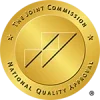If you’ve come across a white, round pill with “AN 627” imprinted on it, you’re looking at a prescription medication that millions of Americans use for pain management.
However, what many people don’t realize is that this seemingly innocuous pill carries significant risks, including the potential for addiction and serious side effects.
Understanding what the AN 627 pill is, how it works, and its associated risks is crucial for anyone who has been prescribed this medication or knows someone who takes it.
Request a Confidential Callback!
What is the AN 627 Pill?
The AN 627 pill is a 50mg tablet of tramadol hydrochloride manufactured by Amneal Pharmaceuticals. This white, round tablet is easily identifiable by the “AN 627” marking embossed on one side. Tramadol is classified as an opioid pain medication, though it works somewhat differently from traditional opioids like morphine or oxycodone.
Tramadol was originally developed as a “safer” alternative to stronger opioid medications, as it was believed to have a lower risk of addiction and abuse. However, medical professionals and researchers have since discovered that tramadol carries its own significant risks, including the potential for physical dependence, addiction, and serious withdrawal symptoms.
The AN 627 designation specifically refers to the manufacturer’s identification code, helping pharmacists and healthcare providers ensure patients receive the correct medication and dosage.
What is the AN 627 Pill Used For?
The AN 627 pill is primarily prescribed to treat moderate to moderately severe pain in adults. Common conditions for which doctors prescribe tramadol include:
Acute Pain Conditions:
- Post-surgical pain recovery
- Injury-related pain
- Dental procedures
- Broken bones or fractures
Chronic Pain Conditions:
- Arthritis pain
- Fibromyalgia
- Chronic back pain
- Neuropathic pain (nerve-related pain)
Doctors typically prescribe the AN 627 pill when over-the-counter pain medications like ibuprofen or acetaminophen haven’t provided adequate relief, but the patient’s pain doesn’t warrant stronger opioid medications. It’s often viewed as a “middle-ground” option in pain management protocols.
However, it’s crucial to understand that tramadol should only be used under strict medical supervision and exactly as prescribed. The medication is not intended for long-term use without careful monitoring by a healthcare provider.
You are not alone. You deserve to get help.
Nashville Treatment Solutions is an industry leader in addiction treatment. Our team of top medical experts specialize in dual diagnosis treatment and are committed to ensuring that each patient is treated as an individual. Call us today, we’re available 24/7.
How Does Tramadol Hydrochloride Work?
Tramadol hydrochloride works through a dual mechanism that sets it apart from other opioid medications.
Primary Mechanism – Opioid Receptor Binding: Like other opioids, tramadol binds to mu-opioid receptors in the brain and spinal cord. When these receptors are activated, they block pain signals from reaching the brain, providing pain relief. However, this same mechanism is responsible for the medication’s potential for abuse and addiction.
Secondary Mechanism – Neurotransmitter Inhibition: Tramadol also inhibits the reuptake of serotonin and norepinephrine, two important neurotransmitters in the brain. This action provides additional pain relief and may contribute to mood-related effects, but it also increases the risk of dangerous interactions with other medications, particularly antidepressants.
This dual mechanism means that tramadol affects multiple systems in the body simultaneously, which can lead to complex interactions and side effects that users might not expect from a pain medication.
When Does Someone Use A 627 Pill?
The timing and circumstances for using the AN 627 pill should always align with medical guidance.
Appropriate use typically falls into these categories:
Acute Pain Situations:
- Immediately following surgery or medical procedures
- After sustaining an injury
- During recovery from dental work
- When experiencing severe pain flare-ups
Chronic Pain Management:
- As part of a comprehensive pain management plan
- When other treatments haven’t provided adequate relief
- During periods when pain significantly impacts daily functioning
- Under ongoing medical supervision for long-term conditions
Inappropriate Use Warning Signs: It’s important to recognize when tramadol use may be becoming problematic:
- Taking the medication for emotional relief rather than physical pain
- Using more than prescribed
- Taking doses more frequently than directed
- Continuing to use when pain has subsided
- Seeking multiple prescriptions from different doctors
Anyone experiencing these patterns should seek immediate medical attention and consider addiction treatment resources.
Why is Stopping The 627 Pill Risky?
Discontinuing tramadol, particularly after regular use, can be dangerous and should never be attempted without medical supervision. The risks associated with stopping tramadol include:
Withdrawal Syndrome: Tramadol withdrawal can be particularly challenging because of the medication’s dual mechanism of action. Symptoms may include:
- Severe anxiety and agitation
- Flu-like symptoms (chills, sweating, muscle aches)
- Nausea and vomiting
- Sleep disturbances and insomnia
- Brain fog and confusion
Seizure Risk: One of the most serious risks of stopping tramadol abruptly is the increased likelihood of seizures. This risk is elevated in individuals who:
- Have been taking high doses
- Have used tramadol for extended periods
- Have a history of seizures or head trauma
- Are taking other medications that lower seizure threshold
Psychological Complications: The sudden discontinuation of tramadol can lead to:
- Severe depression
- Anxiety and panic attacks
- Intense cravings for the medication
- Thoughts of self-harm
Safe Discontinuation: Medical professionals typically recommend a gradual tapering schedule to minimize withdrawal risks. This process should always be supervised by a healthcare provider and may take several weeks or months depending on the individual’s usage pattern and overall health.
What Are Side Effects of Tramadol?
The AN 627 pill can cause a wide range of side effects, from mild and manageable to severe and life-threatening. Understanding these potential effects is crucial for safe use.
Common Side Effects:
- Nausea and vomiting
- Dizziness and lightheadedness
- Drowsiness and fatigue
- Constipation
- Dry mouth
- Headache
- Sweating
Serious Side Effects:
- Respiratory depression (slowed or stopped breathing)
- Seizures
- Serotonin syndrome (particularly when combined with other medications)
- Severe allergic reactions
- Low blood pressure
- Confusion and disorientation
Long-term Effects: Extended use of tramadol can lead to:
- Physical dependence
- Tolerance (needing higher doses for the same effect)
- Hormonal imbalances
- Cognitive impairment
- Increased sensitivity to pain (hyperalgesia)
When to Seek Emergency Care: Immediate medical attention is required if you experience:
- Difficulty breathing or shallow breathing
- Severe dizziness or fainting
- Seizures
- Signs of allergic reaction (swelling, rash, difficulty breathing)
- Severe confusion or hallucinations
How Does a 627 Pill Interact with Other Medications?
Tramadol has numerous potentially dangerous drug interactions that can lead to serious health complications or death. These interactions are particularly concerning because tramadol affects multiple neurotransmitter systems.
Dangerous Interactions:
Antidepressants:
- SSRIs (Selective Serotonin Reuptake Inhibitors)
- SNRIs (Serotonin-Norepinephrine Reuptake Inhibitors)
- MAOIs (Monoamine Oxidase Inhibitors)
- Tricyclic antidepressants
These combinations can lead to serotonin syndrome, a potentially fatal condition.
Other Opioid Medications: Combining tramadol with other opioids dramatically increases the risk of:
- Respiratory depression
- Coma
- Death
CNS Depressants:
- Benzodiazepines
- Alcohol
- Sleep medications
- Muscle relaxants
Seizure-Related Medications:
- Medications that lower seizure threshold
- Some antibiotics
- Certain psychiatric medications
Over-the-Counter Concerns: Even common medications can interact with tramadol:
- Some cold and allergy medications
- Sleep aids containing diphenhydramine
- Herbal supplements like St. John’s Wort
Always inform all healthcare providers about tramadol use, and never start new medications without discussing potential interactions.
Safety Measures For The 627 Pill
Implementing comprehensive safety measures is essential for anyone prescribed the AN 627 pill. These precautions can help prevent addiction, overdose, and other serious complications.
Storage and Security:
- Store in original prescription container
- Keep in a locked cabinet or box
- Maintain room temperature, away from moisture and heat
- Never leave pills accessible to children, teens, or others
- Count pills regularly to monitor usage
Medical Communication:
- Maintain open communication with your prescribing physician
- Report all side effects, no matter how minor they seem
- Discuss any concerns about dependence or addiction
- Provide complete medical history, including mental health conditions
- Inform all healthcare providers about tramadol use
Lifestyle Considerations:
- Avoid alcohol completely while taking tramadol
- Don’t drive or operate machinery until you know how the medication affects you
- Avoid activities requiring alertness if experiencing drowsiness
- Stay hydrated and maintain regular meals
- Get adequate rest and sleep
Emergency Preparedness:
- Keep emergency contact information readily available
- Ensure family members know about your medication use
- Have a plan for medical emergencies
- Keep naloxone (Narcan) available if recommended by your doctor
Is the AN 627 Pill Addictive?
Yes, the AN 627 pill (tramadol) is addictive and carries significant potential for abuse and dependence. While it was initially marketed as having lower addiction potential than traditional opioids, research has revealed that tramadol can be highly addictive.
Addiction Risk Factors:
- History of substance abuse
- Mental health conditions
- Chronic pain conditions
- Genetic predisposition to addiction
- Social or environmental factors
- Prolonged use, even as prescribed
Signs of Tramadol Addiction:
- Taking more medication than prescribed
- Taking doses more frequently than directed
- Unable to manage pain or function without the medication
- Continuing to seek prescriptions when pain has resolved
- Doctor shopping or seeking multiple prescriptions
- Experiencing withdrawal symptoms when not taking the medication
- Neglecting responsibilities due to medication use
- Social isolation or relationship problems related to drug use
Physical Dependence vs. Addiction: It’s important to understand the difference:
- Physical dependence can develop even with prescribed use and involves withdrawal symptoms when stopping
- Addiction involves compulsive use despite negative consequences and loss of control
The Addiction Process: Tramadol addiction often develops gradually:
- Tolerance: Needing higher doses for the same pain relief
- Physical dependence: Experiencing withdrawal when not taking the medication
- Psychological dependence: Relying on the medication for emotional regulation
- Full addiction: Compulsive use despite harmful consequences
Nashville Treatment Solutions Provides Addiction Treatment For The 627 Pill
At Music City Detox, we understand that tramadol addiction is a serious medical condition that requires professional treatment. Our comprehensive approach addresses both the physical and psychological aspects of tramadol dependence, helping individuals reclaim their lives from prescription drug addiction.
Our Treatment Approach:
Medical Detox: Our medically supervised detox program provides safe withdrawal from tramadol under 24/7 medical care.
Individualized Treatment Plans: Every person’s addiction is unique, which is why we create customized treatment plans that address:
- The severity and duration of tramadol use
- Dual diagnosis conditions
- Chronic pain management needs
- Personal and family circumstances
- Previous treatment experiences
Comprehensive Services:
- Individual counseling and therapy
- Group therapy sessions
- Family therapy and education
- Mental health treatment
- Aftercare planning and support
Evidence-Based Therapies: Our team utilizes proven treatment modalities including:
- Cognitive Behavioral Therapy (CBT)
- Dialectical Behavior Therapy (DBT)
- Trauma-informed care
- Motivational interviewing
- Relapse prevention planning
At Music City Detox, we believe that recovery is possible for everyone. Our compassionate, experienced team is here to guide you through every step of the recovery process.
Take the First Step Toward Recovery Today
If you or someone you love is struggling with tramadol addiction, don’t wait for the problem to get worse. Prescription drug addiction is a serious medical condition, but it’s also treatable. At Nashville Treatment Solutions, we’re here to help you break free from the cycle of addiction and reclaim your life.
Recovery is possible, and you don’t have to face this alone. Let Nashville Treatment Solutions be your partner in healing and hope.








